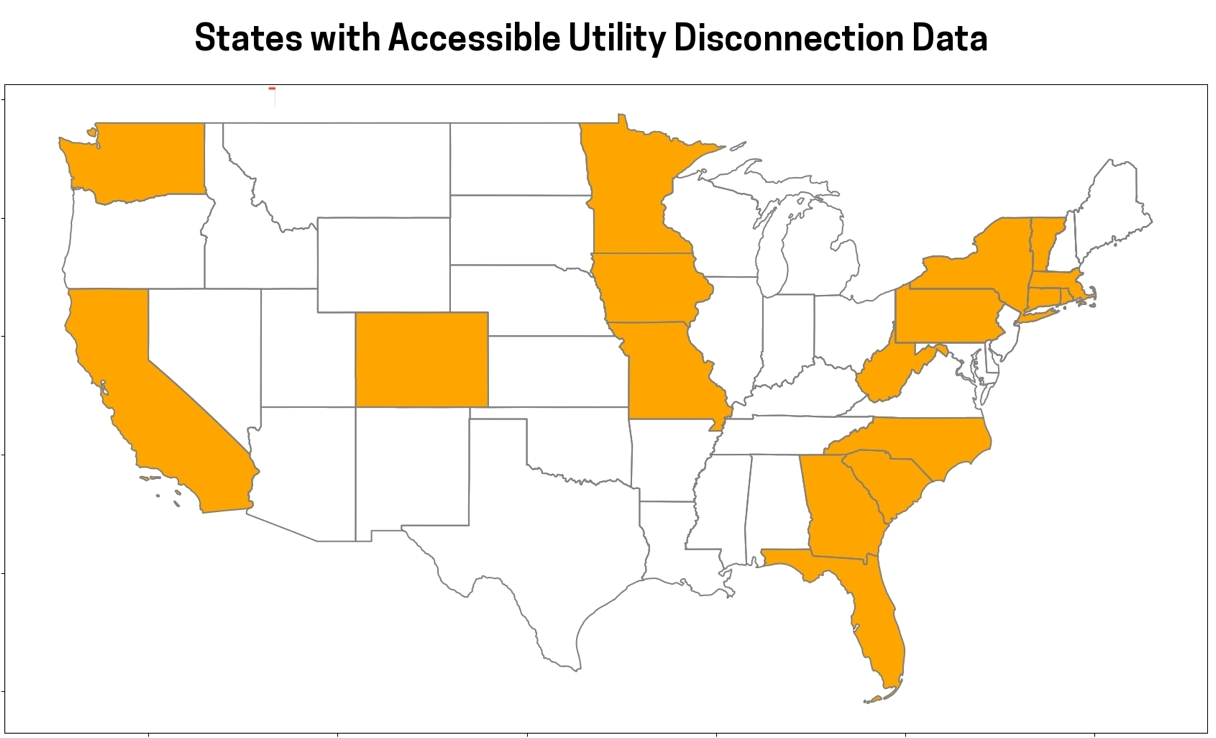
What Do We Know about Utility Shutoffs of Vulnerable Families during COVID-19?
As households across the United States began to feel the multifaceted impacts of the COVID-19 pandemic, thousands of grassroots organizers rallied for a moratorium that would protect vulnerable customers facing disconnections from their utility. Disconnecting households for unpaid energy bills would have meant the loss of critical energy services for families just as they may have lost their jobs and outside access to childcare due to the pandemic. By May 2020, 1,055 electric distribution utilities had implemented some form of a shutoff moratorium.
However, these moratoriums varied in their duration and customer protections, and it is unclear if they led to tangible decreases in disconnections. Most utilities are not required to report how many disconnections they carry out. According to a study from the Center for Biological Diversity, only 20 states require regulated utilities to disclose the quantity and duration of customer disconnections. Now, most utility shutoff protections have expired, and states are signaling they do not plan to extend these protections despite the continuation of economic hardship caused by the global pandemic as well as recent increases in energy prices and energy burdens.
Consumer advocates have insufficient access to data to hold utilities accountable for this ongoing issue. Universal access to utility disconnection data — particularly for the past few years before and during the pandemic — would allow utilities, advocates, and regulators to much better assess the impact of disconnections and moratoriums on families and communities. This data could allow utility stakeholders to evaluate alternatives to disconnection that would better balance the financial implications of bill non-payment with the societal costs of disconnection on the most vulnerable families and communities.
States with readily available and accessible disconnection data from regulated utilities, as of summer 2021. Based on data from the Center for Biological Diversity’s “Power Crisis: Despite Transparency Failures, Utility Information Reveals Major Home Shutoff Problem.”
Health and Economic Impacts on Vulnerable Families
Broader transparency around the frequency, duration, and distribution of disconnections is critical for understanding how effective these moratoriums have been in protecting vulnerable customers during the pandemic.
Prior studies have suggested that utility shutoffs can be extremely disruptive to families. Loss of energy services such as lighting, heating, cooling, food preservation, and well pumps can have severe negative impacts on the finances, health, and safety of vulnerable families. An analysis from the Utility Reform Network demonstrated that children in households facing utility shutoffs in California had a higher likelihood of poorer health, developmental delays, and hospitalization.
In addition, families that face the possibility of disconnection may make dangerous trade-offs by forgoing expenditures on essentials such as food in what is known as the “heat or eat” dilemma. An NAACP report found that 24 percent of surveyed low-income households with a high energy burden reported having gone without food for at least one day, and 37 percent went without medical or dental care.
Disconnection Disproportionately Impacts Black and Latinx Households
The burdens of utility shutoffs disproportionately impact communities of color. According to data from the University of Indiana, during the first wave of the COVID-19 pandemic, 20 percent of Black and 28 percent of Latinx households could not pay an energy bill, compared to 2.4 percent of white households in the United States. During the first three months, twice as many low-income Black households and five times as many low-income Latinx households received a disconnection notice, compared to their white counterparts.
Latinx communities have been particularly hard-hit by utility shutoffs, according to a study in California. Latinx people make up one-third of the customer base within PG&E’s service territory, but they make up 62 percent of the population in the zip codes with the highest shutoff rates within that territory. Disconnections uphold the energy-poverty cycle in which low-income families are far too often trapped — research demonstrates that utility disconnections prolong periods of economic scarcity for families. These disparities and impacts are only exacerbated during a time of crisis such as the COVID-19 pandemic.
The Urgent Need for Transparency and Just Alternatives to Disconnection
Mitigating the impacts of climate change is likely to require electrifying the economy. While the health benefits of electrification are significant, an electrified economy may also bring a greater reliance on electricity and electric utilities for energy-intensive services. This could exacerbate the impact of disconnection on vulnerable populations who are already facing high energy burdens. To advance an equitable and just transition to a clean, electrified economy, we must take seriously the impacts of disconnection — which, in turn, requires comprehensive data transparency.
Utility transparency around energy shutoff practices can help advocates, regulators, and utilities work together to illuminate inequitable practices. Transparency can also equip policymakers and regulators with data to identify novel or alternative approaches, such as arrearages or bill programs, to mitigating the disparities and negative impacts associated with disconnections. For example, stakeholders in Minnesota have proposed that rates of disconnections be collected and used as a performance metric in utility regulation. Indeed, without such information, regulators cannot perform one of their most basic functions — enforcing the utility’s obligation to serve all customers, including the most vulnerable, at a fair price.

